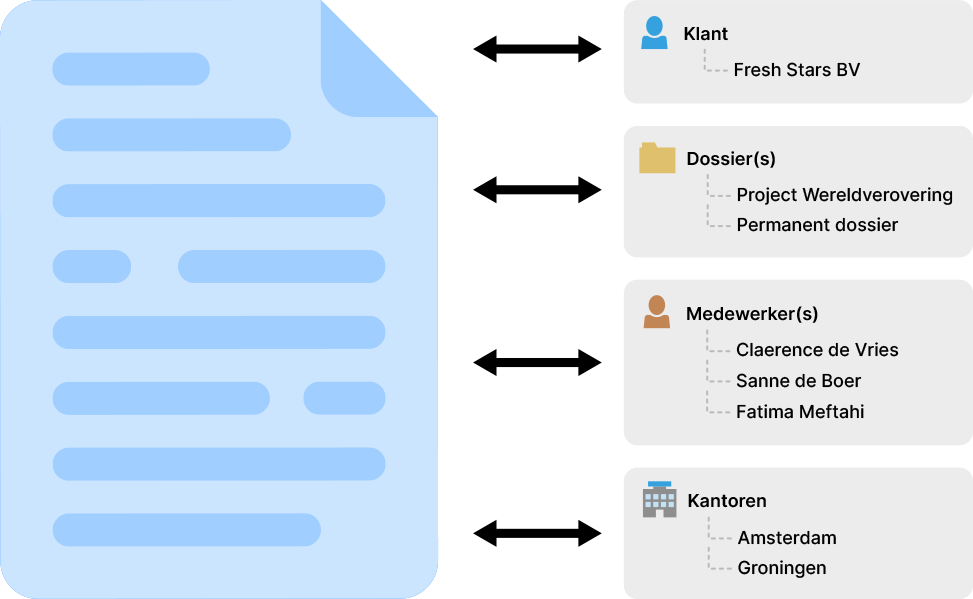What is a 360-degree customer view? What does a 360-degree customer view mean for your organisation and services? In this article, we explain what a 360 customer view is and what it brings to an organisation.
Content
Information is in loose places everywhere
Every organisation deals with customers or other external stakeholders. Regardless of the product or service a company provides, it works with many different types and sizes of information. Since it is mainly digital information, we call this information data for convenience. Data within an organisation comes in two forms:
Structured data
This is data that does not appear in document form but these are data from, for example, your CRM (customer name, contact details, etc.), ERP (project name, employees involved, dates, etc.) or other LOB software (case number, statuses, etc.). Simply put, it is data that is often stored in a database.
Unstructured data
Data that occurs in file or document form is called unstructured. These include documents, presentations, images, videos, drawings and so on. Basically, this data cannot be captured in a database. Unstructured data is also stored in very different places created. Documents such as contracts, advisory reports and project plans, for instance, can be created with Word, drawings are created in AutoCAD and videos are made with software like Adobe Premiere Pro and Final Cut Pro. In addition, unstructured data is stored in many more places saved: on a local hard drive, in SharePoint, Google Drive, your mailbox, perhaps a shared network drive and so on.
The problem with structured and unstructured data is that they are thus often related but not connected.
Imagine you have opened a customer account in your organisation's CRM. Then you are looking for all the associated unstructured data (contracts, project proposals, presentations, etc.). Where are they located? And how do you then keep track of all these documents?
You are then forced to switch between applications to get the information out everywhere. Moreover, the question is whether you know where all documents are in this case.
Conversely, this is perhaps even more true: with a document, you want to know who and what all belongs to it. Which customer? But also which internal employees? To which file or project does this document belong?
This is where M-Files shows its sheer power.
360-degree view of data & information
Because M-Files is built on metadata, it can immediately show what each document is linked to. See the example below:

Each of these objects provides a search entry from the side of structured data (customer, project, file, etc.) to a document you are looking for.
And each document in turn represents the linked structured data that belongs to it.
What these objects are can be customised and depends entirely on the organisation's specific situation.
These objects can be stored in M-Files, but they can also come from external systems. Think, for example, of CRM, ERP or other LOB software.
In this way, M-Files forms the glue between all types of data in the organisation and creates a countless number of search entries to the same information.
Advantages of a 360-degree image
This 360-degree view of customers, records, documents and basically all types of data and information offers great benefits to organisations:
- Employees have an overview of all documents and information at a glance
- Employees spend dramatically less time searching for information they need
- Data is no longer duplicated
Are you curious what a 360-degree view looks like for your organisation? Schedule an online demonstration in and we will provide a sample specifically tailored to your situation.
Of course, you can also Download M-Files and get to work themselves.